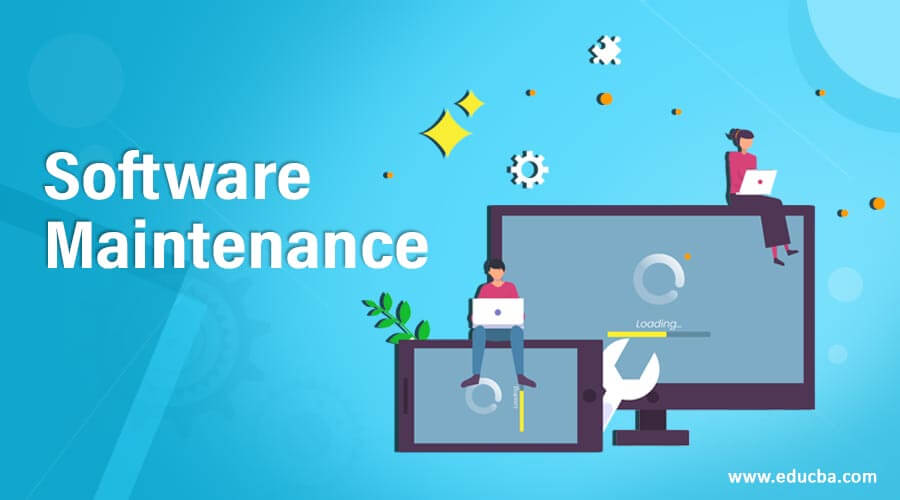Updated June 5, 2023
Introduction of Software Maintenance
Software maintenance is one of the phases of the software engineering lifecycle that involves fixing reported issues and new enhancements to optimize performance. It is an essential and continuing phase that starts after the development, testing, and deployment or delivery phases are completed. Most of the packaged software follows the regular maintenance or patch release cycle. At the same time, the organization-specific software requires planning and process management for the maintenance phase. With the growing need and change in technology for software operations, the maintenance phase is vital for every organization that uses software for efficient business processes.
Need for Software Maintenance
This section will discuss the need for maintenance with some real-world use cases. There are several instances and business scenarios that raise the maintenance phase.
Some of the business scenarios are as follows –
- Organization structure change
- Market demand
- Regulatory changes
- Client requirements for customization
- Software Upgrades
- Design improvements
- Interfacing with other applications
- Fixing the bugs
- Increase scalability
- Increase deployment options
- Improve efficiency based on the business process load
An example of a software maintenance requirement would be the retail storehouse software managing the supply chain in a particular location. The business grew and merged with another retail chain vendor. The warehouse management software must be customized to integrate and upgrade the existing capacity with the new retail chain business software to work efficiently. This is a software maintainable phase for the retail warehouse management software.
Software Maintenance Process
The processes involved based on the industry standard for lifecycle are as follows.
- Requirements Identification: Requirements identification and tracing is the initial process that involves several interactions with the associated resources and external entities.
- Analysis Activity: It involves the functional and technical analysis of the maintenance activities based on the business need.
- Design Phase: This phase involves architecting and designing the technical component to achieve the maintenance goal.
- Implementation Phase: This is the development and configuration phase .most of the developer resource is involved. Teams collaborate to develop using the existing application codes concerning existing software functionalities.
- Testing Phase: This involves testing resources to check the new manganese feature or configurations. Also, this phase ensures the new change based on the maintenance scope. It ensures the new changes are not impacting any other functions not in that phase’s scope.
- Delivery Phase: This phase deals with maintaining deployments and enabling the maintenance features and fixes to the software. The important aspect is the working window of the deployment activities, as this may require a business downtime to complete the activities. It also manages the training and documented instructions of the changes to the users.
- Maintenance Management Phase: This phase involves configurations and version control of the software artifacts associated with the implemented software. It is a relevant process for patch releases and iterative phases.
Similarly, several maintenance categories are associated with software maintenance processes based on business requirements.
The types are as follows:
- Adaptive Maintenance: This type involves updating and modifying the software after delivery to accommodate up-to-date technology changes and industry needs.
- Corrective Maintenance: This type is the reactive modification to the software after delivery to correct the problems identified by the users or by the error reports collected over time.
- Preventive Maintenance: This type of activity is related to modifying and applying the software updates after delivery to prevent possible faults in the future. These include fixing minor issues that are not significant at the moment. However, those can be effective faults at a later point in time.
- Perfective Maintenance: This type is related to the enhancements and modifications to the delivered software for increasing the performance, usability, reliability, and maintainability
Advantages
Maintenance is very useful in increasing business process efficiency. There are several direct and indirect benefits to the business received by the maintenance phase of the implemented software.
Some of the major advantages are as follows –
- Reduces operational costs.
- Increase productivity
- Faster delivery time to the customer by increasing the automation capabilities of the existing software.
- Increase in Compatibility to integrate with other business units or partner software systems.
- Reduce the risk of any dependent software, such as Operating systems or driver software deprecating.
- Scale the business with the implemented software stack.
- Regular support and service from the software vendor.
- Eligible to upgrade to the latest version of the software with minimal effort.
- Periodic maintenance alerts option from software vendors for better security and industry compliance policies.
Disadvantages
Despite several advantages, the phase has some disadvantages associated with it.
- The phase is associated with different parties and time constraints.
- There might be temporary downtime to the production of the business while the changes are applied and configured.
- The existing staff and external users such as customers, partners, and other business stack holders must promptly be instructed and trained about any change in the software promptly. As the users are already familiar with the existing processes and habituated to using the software, it is essential to represent the change in simplified descriptions.
- The additional change management plan for the integrated applications to adapt to the changes.
Conclusion
The phase is the least focused area compared to other SDLC phases, such as development and testing. However, Managing the change requests and regular updates for the software already in production took more time and effort. Hence, maintenance is crucial for proper functioning.
Recommended Articles
This is a guide to Software Maintenance. Here we discuss the introduction, the need for software maintenance, advantages, and disadvantages. You may also have a look at the following articles to learn more –

